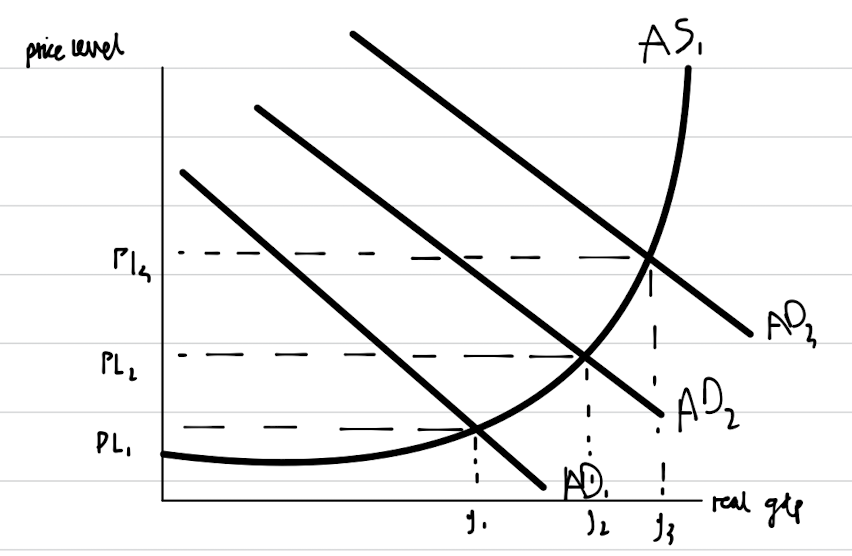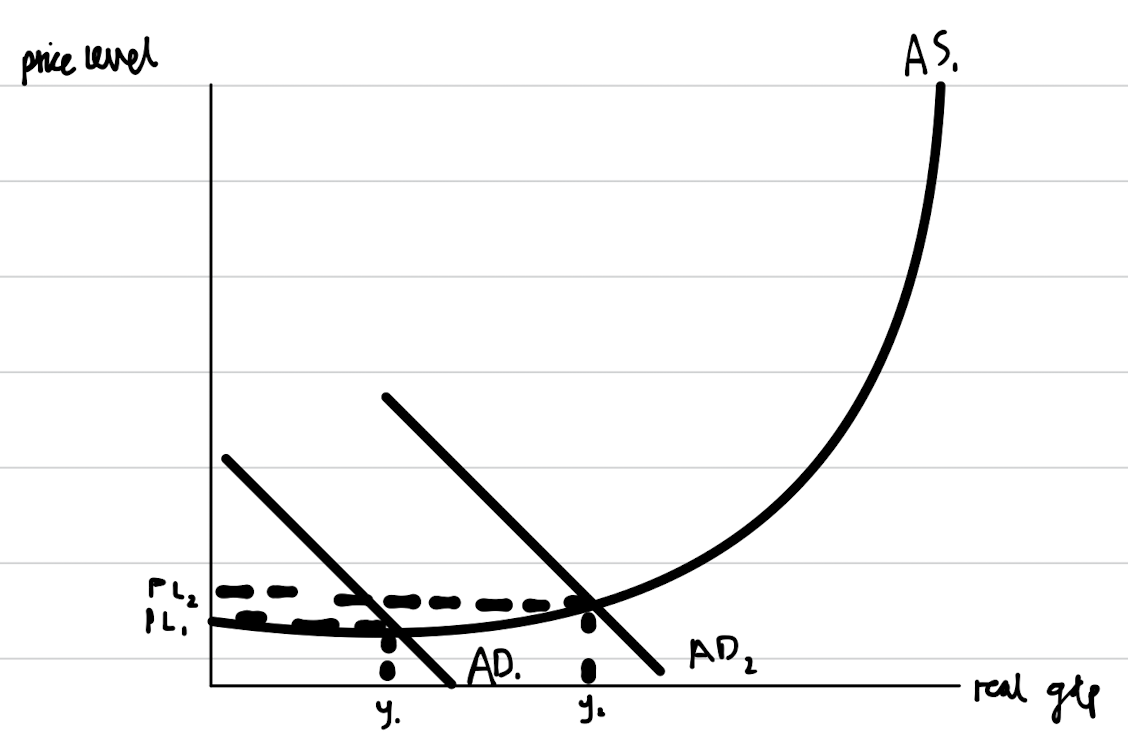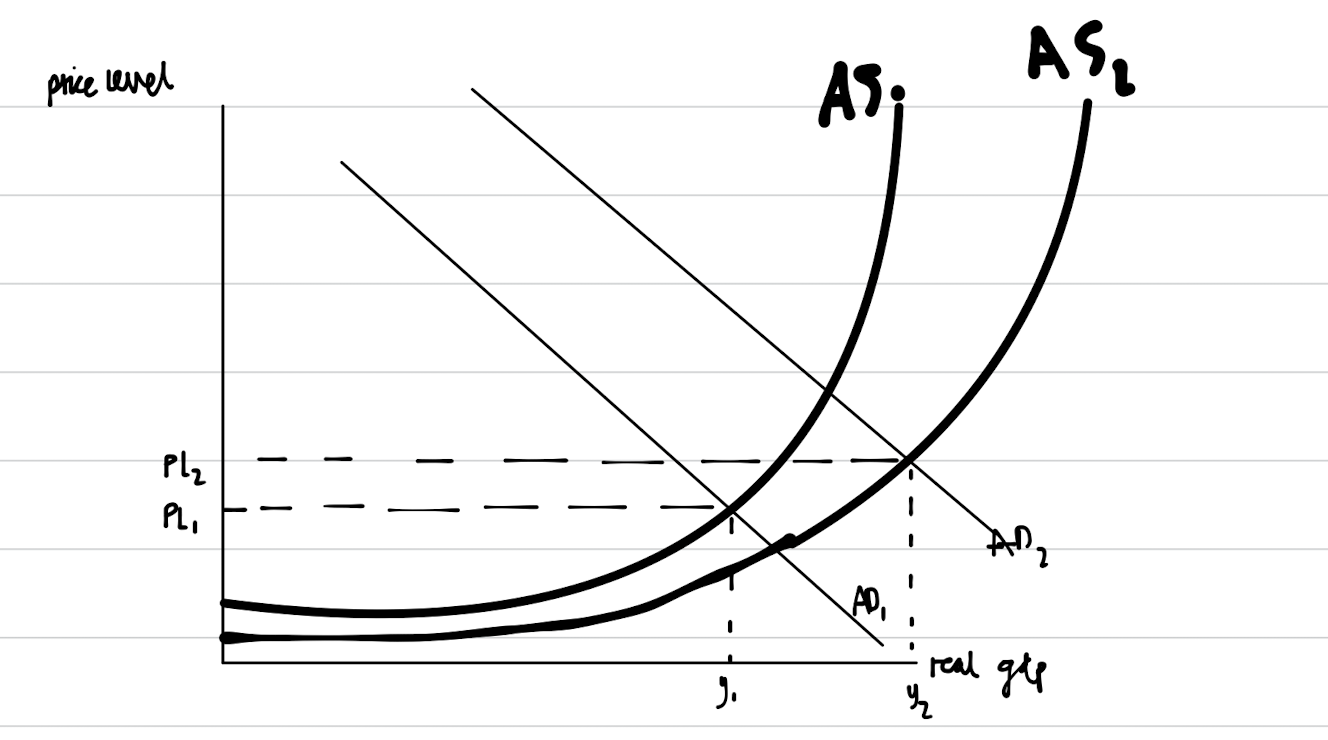Evaluate the view that the main objectives of UK government macroeconomic policy can be achieved without conflicting with each other. (June 2020)
Plan
- Introduction - state the four macroeconomic onjectives and state that it is difficult to achieve them all at the same time.
- P1 - they cannot be achieved without conflict - give examples and reasons
- a right shift in aggregate demand will cause an increase in price levels
- P1 evaluation - negative output gap
- P2 - they can be achieved without conflict - give examples and reasons
- supply-side policies
- P2 evaluation - opportunity cost and time lag
The UK has four main macroeconomic objectives - 2% inflation, economic growth, low unemployment, and a balance of payments on the current account. It is quite difficult to all of these at the same time - for example, economic growth and lower unemployment often leads to a greater rate of inflation, as shown by the Phillips curve.
It is difficult to achieve all four macroeconomic objectives at the same time. For example, economic growth is when real GDP increases. This could happen when aggregate demand shifts to the right. Aggregate demand is the total planned spending in the economy and AD = C + I + G + (X-M). An increase in government spending is one example of a cause of a right shift in aggregate demand. For example, if they increase spending on welfare benefits, this could lead to some consumers having a greater disposable income. This would lead to an increase in consumer spending on top of the increase in government spending. As a result, aggregate demand would shift to the right. Also, there is a chance of a positive multiplier effect because the initial increase in AD could lead to further increases in AD. Consumers on welfare benefits would have a higher marginal propensity to consume than others. This is the proportion of an extra £1 that the consumer will spend rather than save. This means the multiplier effect of the government spending is likely to be high (k = 1/(1-MPC). Those on benefits will spend their extra disposable income when shopping, or at the cafe, and this will increase incomes of local businesses, which would be injected into the economy as further consumer spending or business spending.

The diagram shows that aggregate demand increases multiple times which causes an increase in price level alongside the increase in economic growth. This is not ideal because inflation causes cost of living to increase, and causes people to have lower disposable incomes, which means their living standards could fall unless they ask for higher wages. Therefore, achieving some of the macro objectives will cause conflict with other objectives.
However, an increase in aggregate demand and economic growth does not always cause an increase in price level.

The diagram shows aggregate demand increasing during a recession. There may have been a negative output gap which is when the actual rate of economic growth is lower than the trend rate of economic growth. This is associated with high levels of unemployment. There are lots of resources in the economy which are underemployed, which means that an increase in aggregate demand will not cause a strain on the available resources and factors of production, and this will not cause a strain on price level.
On the other hand, it is possible to achieve all four macroeconomic objectives without causing any conflict between them. This can only be done through supply-side improvements. Supply side policies are the range of policies that can be used to increase the productive capacity of the economy. There are both interventionist and market-based supply-side policies. One example of an interventionist policy is an increase in spending on infrastructure, for example with HS2. This increase in spending would aim to create an improvement in transport links around the UK which would allow businesses to increase their productivity (output per worker or output per hour). As a result, businesses around the UK would be able to produce more goods and services with the same amount of resources. The impact of this is a right shift in long run aggregate supply.

As a result, there would be an increase in economic growth due to the increase in real gdp produced by firms, and a decrease in unemployment. The diagram shows that when aggregate demand increases due to an increase in government spending, such as benefits or on HS2 itself. Long-run aggregate supply also increases which means that employment and real gdp increase from y1 to y2 but we don't see much of an increase in price level. Exports could also increase because UK goods and services become more competitive. As firms are more productive, they are able to produce goods and services at a lower cost, or of a higher quality. Overall. this shows it is possible to achieve all four macroeconomic objectives at once.
However, the issue with supply-side policies is often the substantial opportunity cost as well as the time lag. For example, the total budget for HS2 could reach close to £100 billion by completion. Also, the plans were proposed in 2010 but parts of it won't be completed until around 2040. Therefore, we wouldn't see the impact on the economy until then.
But overall, in the long run, supply side policies are the best and only way to achieve all four macroeconomic objectives without causing conflict.